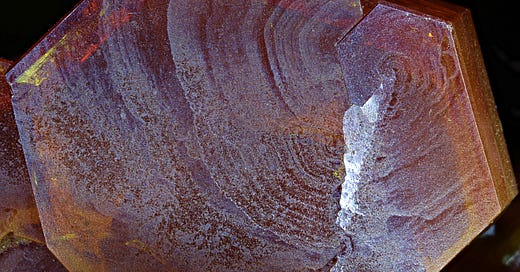Sometimes zoning in crystals isn’t obvious, unless you get the right light. This particular one wasn’t obvious under the microscope, but is in the photo.
But what is zoning you might ask.
Zoning in crystals refers to the variation in chemical composition or structure within a single crystal, often visible as distinct layers or bands. This phenomenon is commonly observed in minerals and can provide valuable insights into the conditions under which the crystal formed. Here are some of the reasons for zoning:
Compositional Zoning: This occurs when the chemical composition of a crystal changes during its growth. For example, plagioclase feldspars often exhibit zoning where the calcium and sodium content varies, resulting in alternating layers of different compositions.
Growth Zoning: This type of zoning is a result of changes in the environment during crystal growth. Factors such as temperature, pressure, and the availability of certain elements can fluctuate, leading to variations in the crystal's composition.
Oscillatory Zoning: This is characterised by repetitive, rhythmic changes in composition, often seen as concentric bands within the crystal. It can be caused by periodic fluctuations in the growth conditions, such as cyclic changes in temperature or fluid composition.
Sector Zoning: This occurs when different faces of a crystal incorporate different amounts of impurities or have different growth rates, leading to sectors within the crystal that have distinct compositions or structures.
Colour Zoning: Sometimes, zoning is visible as colour variations within a crystal. This can be due to differences in the concentration of trace elements that affect the crystal's colour.
Deformation Zoning: This type of zoning results from external stresses that cause parts of the crystal to deform or recrystallise, leading to variations in structure and composition.
Below: Vanadinite, Mibladen, Morocco. Width of view 6mm.





A cogent and well zoned answer. Thanks Steve.